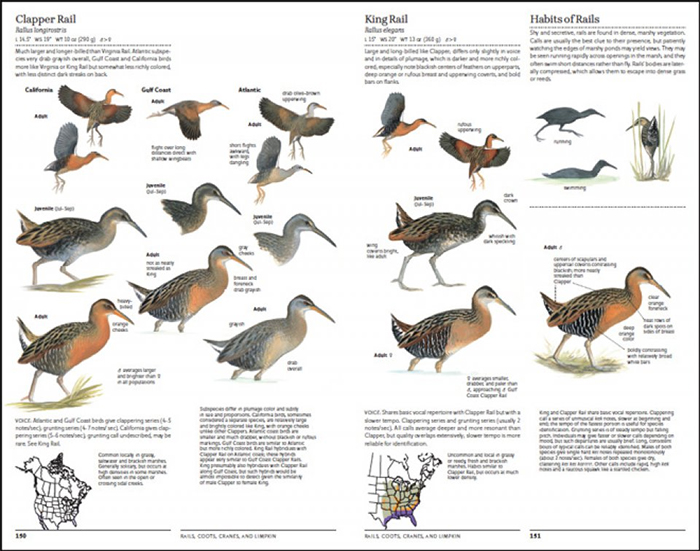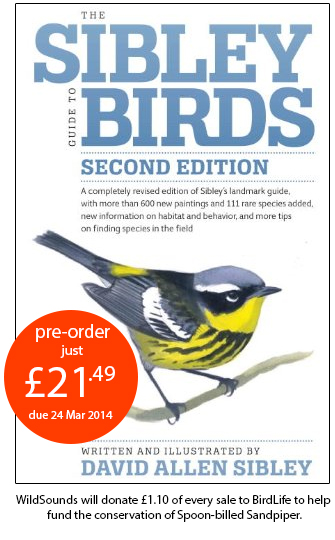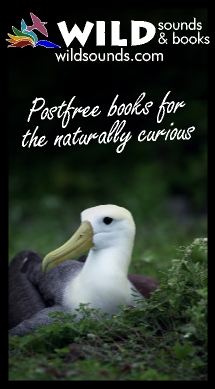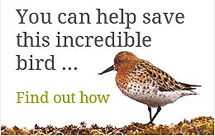The North American Bird Guide, second edition
David Sibley
This is the brand new, updated version of the familiar large format single ‘Sibley Guide’ to the birds of the whole of North America (west and east combined). Its size and format will therefore already be familiar to most.
Helpfully, the author provides a quick overview of the changes. These involve the addition of new species whose status has altered (e.g. Pink-footed Goose), crisper texts with better comparisons with similar confusion species and more information on status and habitat. Mainly, however, it is the artwork which has been refreshed. Some of the changes correct minor errors from the first edition and improve the colour balance, shading etc. Around a fifth of the paintings have been revised more significantly in the light of the author’s improved knowledge or the development of new identification criteria.
The ‘look’ of the book remains familiar - attractive double-page spreads comprising typical diagramatic field guide-style images, a concise paragraph or two of text, a section on vocalisations and a range map. These latter three components are, however, essentially ‘minimised’, pushed to the edges of the layout so as to accommodate the main focus - the artwork.
As ever, Sibley’s paintings are admirably suited to the task. They are crisp, attractive and possess a certain ‘zing’. The passerines are, as before, the best. Perhaps their neat, rounded shapes and often complex plumage patterns render them easier to capture in paint but the warblers, thrushes, vireos etc. are just gorgeous. It is also nice to see some of ‘our’ Palearctic species portrayed – the renderings of Siberian Stonechat and Red-flanked Bluetail are both accurate and attractive, though the description (twice!) of the latter’s upperparts as ‘drab’ would look odd in a European field guide. Clearly, North American birders really do want their birds to be brighter!

Less successful, however, are the non-passerine paintings and, as so often, it is the gulls which appear weakest. Maybe their somewhat ungainly shapes and subtle facial characters are harder to portray but these images are a little more like generic shapes with features painted on. This phenomenon is not restricted to this guide, of course. Presumably gulls, especially large gulls, are just really hard to paint convincingly. Certainly few artists seem to master them, though thankfully some do.
As mentioned above, the accompanying text is concise (sometimes very concise!), focused and helpful. Some of it is in quite tiny font, however, a little surprising in a relatively large format layout. Wisely, most text space is given to vocalisations and to geographical variation, the latter a particularly important element in any consideration of the North American avifauna (the obvious examples – Song and Fox Sparrows, Dark-eyed Juncos, Red-tailed Hawks etc. – all receive excellent coverage considering the constraints of a field guide format). The taxonomy appears up to date and includes, for example, Pacific Wren. I only noticed one tiny proofing error – the captions for Heerman’s and Black-tailed Gulls on page 197 are transposed.
In summary, this is a highly useful update of an already familiar work, indeed many would regard it as the ‘classic’ North American field guide. Here is probably not the place to rehearse the old arguments over the merits or otherwise of artwork-based or photo-based treatments but this book’s main rival in the latter genre is clearly the ‘Crossley Guide’. Being something of a traditionalist, I would opt for taking the ‘Sibley’ rather than the ‘Crossley’ on a North American trip but would have both at home! If you don’t already own this guide, now is the time to get one.
Andy Stoddart
February 2014
Commission for Conservation
Rare Bird Alert does not profit from the sale of books through Wildsounds. Instead we are part of their Commission for Conservation programme where a percentage of every sale made through RBA helps supports BirdLife's Spoon-billed Sandpiper Fund.









